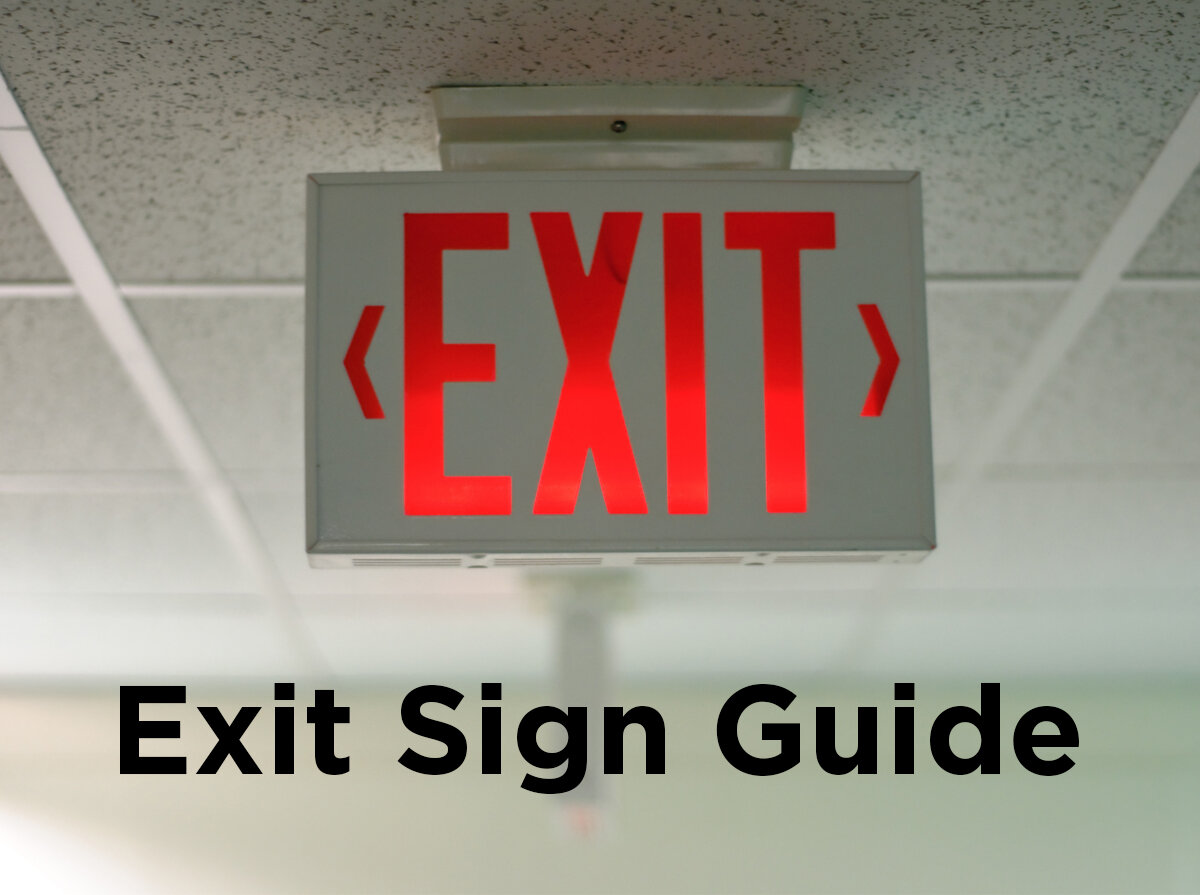Red Light, Green Light
Have you ever wondered why most emergency exit signs are red or green? If you ever played the school-yard game, “Red Light, Green Light” as a child, you know that the color of the light lets you know when to move and when to stay put. Did you know that this game has a connection to emergency exit lighting?
Red tends to denote caution, so red emergency exit signs let people know that caution should be exercised; there is something potentially dangerous occurring and you need to be aware. With this rationale, it’s clear to see why red exit signs have been a mainstay in American buildings for more than 100 years. But there may be a downside to using red. Let’s reconsider the school-yard game—red light means stop. From traffic lights to prohibited action signs, we have been enculturated to remember that red means STOP. Therefore, the European Union generally avoids red emergency exit signs because the last thing you want people to do in an emergency is to stop—instead, you want them to quickly find the nearest exit.
Even if you’ve never played the game, you would likely guess that green means GO. Emergency exit signs are there to guide people towards and/or through the exits that lead to safety. In an emergency, you want people to ‘go’ through these exits.
Now that you know why these emergency exit signs are typically red or green, let’s look at what color you need to use in your scenario.
Who Decides?
The two agencies with overarching regulations and standards for emergency exit signs are the Occupational Safety and Health Administration (OSHA) and the National Fire Protection Association (NFPA). Although both OSHA and NFPA have regulations on lettering size, sign placement, illumination standards, etc. Neither dictate the color. Instead, local municipalities are the authorities having jurisdiction (AHJ) deciding the color you need to use. Contact your local Fire Marshal for the regulations in your area, as they vary by state, and even by municipality.
What Types are Available?
You have choices when it comes to emergency exit signs. The most basic would be a non-illuminated sign. While a non-illuminated sign may seem like the easiest solution, it adds layers of complexity. These require external illumination sources to achieve the standards – what good is the sign if occupants cannot read it? These external light sources come with their own standards and regulations including battery backups in case of a power outage.
Internally illuminated exit signs offer a simple solution. These fixtures conform to OSHA and NFPA regulations and have passed rigorous UL testing. They also have the required battery backups. If there is no emergency lighting near the exit sign, an emergency light combo works nicely, as it has added emergency lighting with a 90-minute run time. Again, check with your local Fire Marshal to ensure that you order the lawful colors.
Photoluminescent signs absorb light energy, and then release it when there is not a light source. This is the same technology that makes your planet and star stickers glow-in-the-dark. These exit signs do not require electricity or battery back-ups, but they do need a charging light. These signs are not suited for all installations, so care should be taken to follow the NFPA guidelines.
Whether you need help choosing between red or green emergency exit signs, or have other lighting questions, you can find us illuminating the world on lighting topics through Facebook, Twitter, LinkedIn, or Pinterest.









